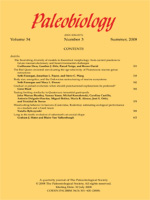Examination of organismal characteristics which promote survivorship through both background and mass extinctions may reveal general ecological principles potentially critical to modern conservation efforts. This study explores survivorship of brachiopods, a highly diverse and abundant Paleozoic clade, through the mid-Permian to mid-Triassic interval, which includes the greatest mass extinction in the history of metazoan life. This interval of time separates two of the major Phanerozoic evolutionary faunas. In this regard, survivorship across any one extinction during the interval would not have been relevant if the survivor went extinct shortly after the extinction event; surviving background extinction is as important as surviving a mass extinction. Similarly, taxa that survived but failed to rediversify also were not major elements of the Mesozoic evolutionary fauna. Thus, the analysis aims to analyze survivorship not just across a single extinction but across the entire mid-Permian to mid-Triassic; only survivors through the entire interval can be the ancestors of the Mesozoic clades.
Fewer brachiopod genera survived the interval than did brachiopod clades, suggesting that pseudoextinction or insufficient sampling could be a problem in analyzing these extinctions; thus, survivorship analysis should be conducted at the clade level. Nine characteristics were examined for generic representatives of 20 North American brachiopod clades, five of which survived both Permian extinctions and the subsequent earliest Triassic transitional interval. Characteristics include both those that operate on global scales and those that operate on the higher-resolution scales of individuals and populations.
Survivors were significantly smaller and occurred less frequently than victims. Mean diversity of communities in which survivors were present was significantly greater. The finding that rare taxa belonging to high-diversity communities were more likely to survive runs counter to traditional predictions. However, these results are consistent with recent studies suggesting that higher diversity within a trophic level may create a buffer, as surviving taxa quickly occupy the vacant niche space of the victims. As size, abundance, and community diversity are all statistically related, the small size of survivors may be an artifact of reduced biovolume per taxon in a diverse community.
No significant relationship exists between global-scale processes and survivorship of brachiopods through the mid-Permian to mid-Triassic. The results suggest that ecological processes can strongly influence global extinction patterns.





